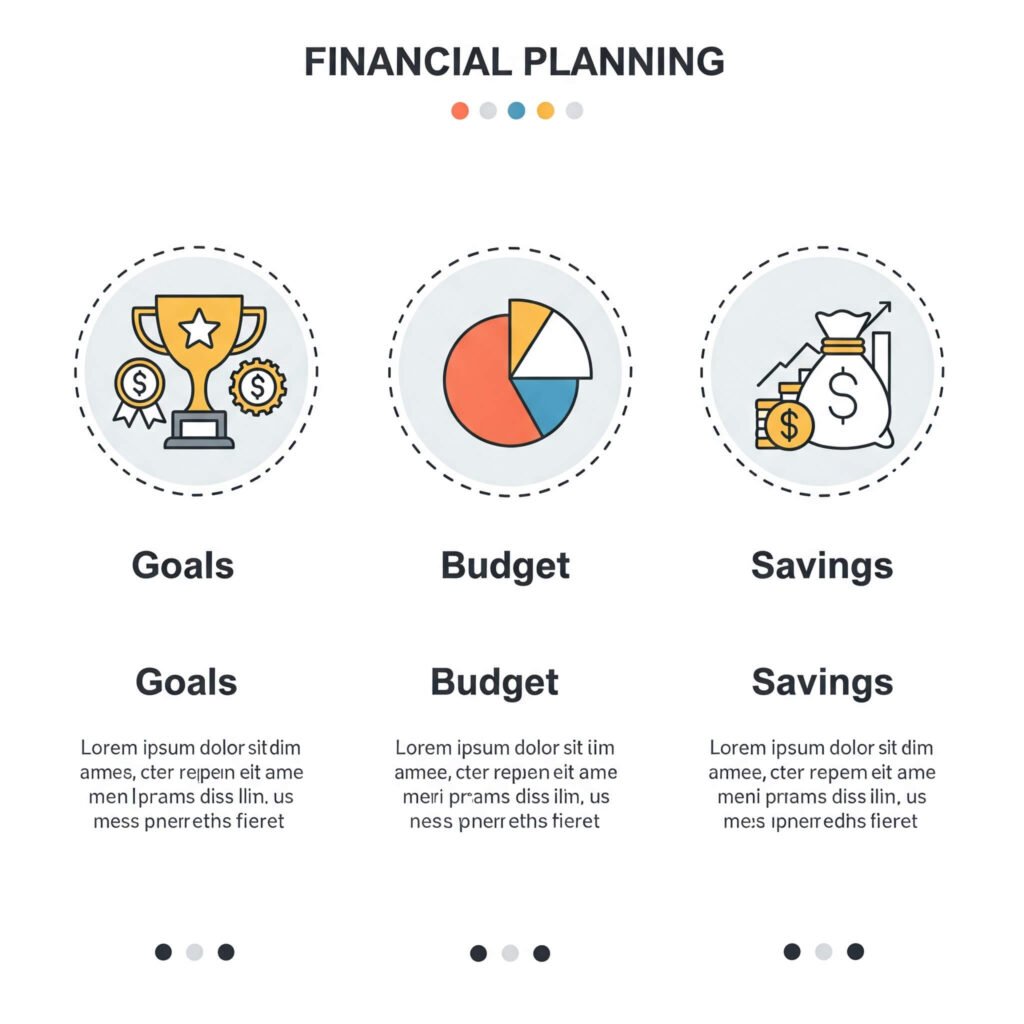
Why Financial Planning is Essential for Beginners
Financial planning helps you align your money with your life goals. A 2024 study by the Financial Planning Association found that 71% of people with a financial plan feel confident about their future, compared to just 44% without one. Whether you’re saving for a big purchase or preparing for emergencies, a plan gives you clarity and control.
The Cost of Not Planning
Without a financial plan, you risk overspending, accumulating debt, or missing opportunities. Take Jake, a 25-year-old barista, who spent years without a plan, racking up $8,000 in credit card debt. Once he started planning, he paid it off in 18 months and began saving for a car.
Step 1: Set Clear Financial Goals
Financial planning starts with knowing what you want. Goals give your plan direction. Here’s how to set them:
- Short-Term Goals (1-2 years): Save for a vacation or build an emergency fund.
- Mid-Term Goals (3-5 years): Buy a car or pay off student loans.
- Long-Term Goals (5+ years): Save for a house or retirement.
- Make Goals SMART: Specific, Measurable, Achievable, Relevant, Time-bound.
- Example: “Save $5,000 for a vacation in 18 months by saving $278/month.”
Pro Tip: Write your goals down and revisit them quarterly to stay on track.

Step 2: Build a Budget for Financial Planning
A budget is the backbone of financial planning. It helps you control spending and prioritize savings. Follow these steps:
- Track Income and Expenses: Use tools like PocketGuard or a simple spreadsheet.
- Use the 50/30/20 Rule: 50% for needs (rent, utilities), 30% for wants (entertainment), 20% for savings/debt.
- Adjust as Needed: Review your budget monthly to reflect changes.
For example, Lisa, a 30-year-old graphic designer, used budgeting to save $2,000 for an emergency fund in a year by cutting dining-out expenses.
Outbound Link: Explore budgeting tools at Mint.
Step 3: Create an Emergency Fund
An emergency fund protects your financial plan from unexpected costs, like job loss or medical bills. Aim for 3-6 months of living expenses. Here’s how to start:
- Begin Small: Save $500-$1,000 as a starter fund.
- Choose a High-Yield Savings Account: Earn more interest with accounts from Ally or Marcus.
- Automate Savings: Set up monthly transfers to stay consistent.
When Mia, a 27-year-old nurse, faced a $1,200 car repair, her emergency fund kept her from dipping into credit cards.
Outbound Link: Learn about high-yield savings accounts at Bankrate.

Step 4: Tackle Debt with a Financial Plan
Debt can sabotage your financial planning efforts. Use these strategies to pay it off:
Debt Snowball Method
- List debts from smallest to largest.
- Pay minimums on all but the smallest debt.
- Put extra money toward the smallest debt until it’s paid off.
- Move to the next smallest debt.
Debt Avalanche Method
- List debts by interest rate, highest to lowest.
- Pay minimums on all but the highest-interest debt.
- Focus extra payments on the high-interest debt.
For instance, Tom, a 32-year-old teacher, used the avalanche method to save $1,500 in interest while paying off $12,000 in loans.
Outbound Link: Find debt repayment tips at Debt.org.
Step 5: Start Investing for Future Wealth
Investing grows your money over time, making your financial plan stronger. Beginners can start with:
- Retirement Accounts: Contribute to a 401(k) or IRA.
- Low-Cost Index Funds: Invest in funds like Vanguard’s VTSAX for diversification.
- Robo-Advisors: Use Wealthfront or Betterment for automated investing.
Sophie, a 29-year-old writer, invested $50/month in an IRA. After 10 years, her account grew to $9,000, thanks to compound interest.
Outbound Link: Get investing basics from The Motley Fool.
Step 6: Stay Educated on Financial Planning
Knowledge is power in financial planning. Keep learning with these resources:
- Books: Read I Will Teach You to Be Rich by Ramit Sethi.
- Podcasts: Listen to The Money Nerds for practical advice.
- Courses: Try free financial planning courses on Udemy.
The more you learn, the better your decisions. For example, Raj, a 26-year-old engineer, took a course on investing and confidently started a retirement account.
Key Takeaways for Financial Planning
- Set Goals: Use SMART goals to guide your financial plan.
- Budget Smart: Follow the 50/30/20 rule to manage money.
- Save for Emergencies: Build a fund for unexpected expenses.
- Pay Off Debt: Use snowball or avalanche methods.
- Invest Early: Start small to grow wealth.
- Keep Learning: Stay informed to make better choices.
Financial planning is simpler than it seems. Take one step at a time, and you’ll build a secure future. Start today!











































